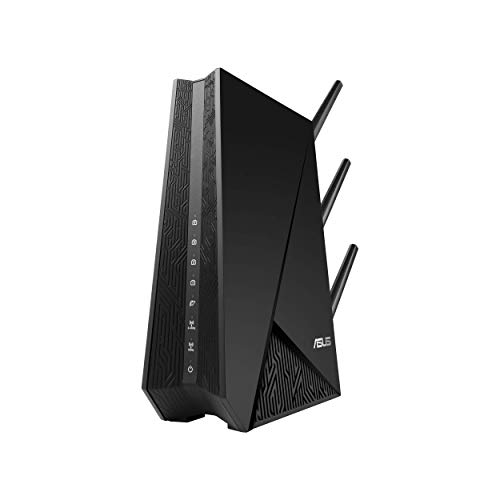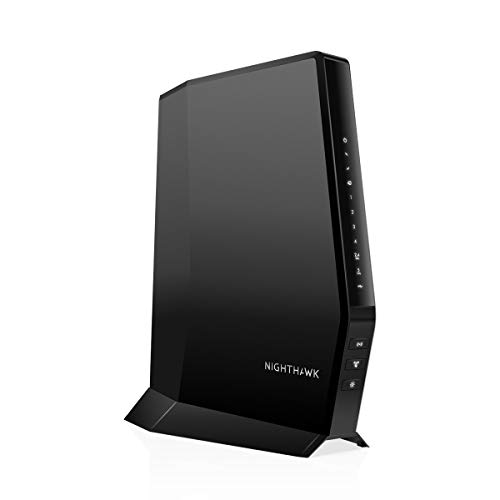Tired of Wi-Fi dead zones, choppy video calls, or slow-loading websites in certain parts of your home? You’re not alone! Many of us struggle with inconsistent wireless signals, especially in larger homes or those with tricky layouts. That’s where a good range extender comes in, breathing new life into your home network.
If you’re specifically looking for an ASUS Dual-Band AC1900 repeater range extender review, you’ve landed in the perfect spot. While the ASUS RP-AC1900 is a fantastic choice, technology never stands still. We’ll dive deep into that popular model and also explore some excellent alternatives and next-generation extenders from both ASUS and TP-Link. Our goal is to help you cut through the jargon and find the best signal booster to get your Wi-Fi humming throughout your entire home. Let’s banish those frustrating Wi-Fi dead spots for good!
Our Top Picks for Boosting Your Home Wi-Fi
Here’s our breakdown of the best range extenders to consider, including the highly sought-after ASUS Dual-Band AC1900 and several powerful competitors.
1. ASUS Dual Band WiFi Repeater & Range Extender (RP-AC1900)

This is the very product that often comes to mind when you think of an ASUS Dual-Band AC1900 repeater range extender review. The RP-AC1900 stands out for its exceptional versatility and seamless integration into the ASUS AiMesh ecosystem. It’s not just a simple signal repeater; it can transform into an AiMesh node, access point, or media bridge, offering incredible flexibility for how you choose to expand your home network. If you already have an ASUS AiMesh-compatible router, this extender truly shines, creating a unified, whole-home Wi-Fi system that ensures smooth, consistent coverage.
- Key Features:
- Maximum Range: Up to 3000 Sq Ft
- Dual-band 802.11AC: Utilizes 2.4 GHz and 5 GHz bands for combined speeds up to 1900 Mbps
- ASUS AiMesh technology: Connects with other AiMesh routers for an expansive, seamless Wi-Fi experience
- Maximum flexibility: Can be used as an AiMesh Node, access point, media bridge, or Wi-Fi extender
- Mobile app support: Control features with the ASUS Extender app or ASUS Router app (for AiMesh)
- Coverage: Ideal for large homes with 3 external antennas
- Network-wide Features: Access to AiProtection, parental controls, and adaptive QoS when connected to an AiMesh network
- Pros:
- Excellent range and speed for its class
- Unrivaled versatility with multiple operating modes
- Seamlessly integrates with existing ASUS AiMesh networks
- Robust security and parental control features (with AiMesh)
- Intuitive mobile app control
- Cons:
- Full feature set benefits most from an ASUS AiMesh router
- Not the latest Wi-Fi standard (AC, not AX or BE)
- Can be a bit bulky for some outlets
User Impressions: Customers frequently praise the RP-AC1900 for its reliability and its ability to cover large areas. Users with existing ASUS routers especially love the AiMesh integration, noting how it creates a truly unified network with minimal fuss. Setup is generally straightforward, though some advanced features might require a quick look at the manual. It’s a solid performer that consistently delivers on its promise.
2. TP-Link AC1900 WiFi Range Extender RE550 | Dual-Band

When exploring alternatives to an ASUS Dual-Band AC1900 repeater range extender review, the TP-Link RE550 is a strong contender. This dual-band Wi-Fi extender delivers impressive 1.9 Gbps total bandwidth, ensuring your devices get the speed they need, whether on the 5 GHz or 2.4 GHz band. With three adjustable external antennas, it’s designed to punch through walls and cover up to 2100 sq ft, making those dreaded Wi-Fi dead zones a thing of the past. Its EasyMesh compatibility also offers a straightforward path to whole-home mesh connectivity if you have a compatible router.
- Key Features:
- Dual-Band WiFi Extender with 1.9 Gbps Total Bandwidth (1300 Mbps 5 GHz + 600 Mbps 2.4 GHz)
- Maximized Coverage: Up to 2100 Sq. Ft. with three adjustable external antennas
- EasyMesh-Compatible: Expand your network for seamless, whole-home mesh connectivity
- Gigabit Ethernet Port: Experience wired speed and reliability anywhere
- Smart Adaptive Roaming: Seamlessly move throughout your home with automatic connections to the strongest signal
- Access Point (AP) Mode: Turn any wired connection into a powerful Wi-Fi hotspot
- Easy Set Up in Minutes: Using the TP-Link Tether app (Android, iOS) with intelligent signal indicator
- Universal Compatibility: Works with almost all Wi-Fi-enabled devices and routers/access points
- Pros:
- Excellent coverage and signal strength
- EasyMesh offers mesh capabilities with compatible routers
- Gigabit Ethernet port is a huge plus for wired devices
- Very easy setup via the Tether app
- Strong commitment to cybersecurity
- Cons:
- Note that extenders improve coverage, not inherently increase internet speed
- Not the latest Wi-Fi standard (AC, not AX or BE)
- Adjustable antennas might protrude more in some setups
User Impressions: Users frequently commend the TP-Link RE550 for its robust signal and straightforward setup. Many found it highly effective in eliminating dead spots and appreciated the option to use it as an access point. The Gigabit Ethernet port is a favorite feature, allowing users to connect devices like smart TVs or gaming consoles directly for maximum stability.
3. ASUS RP-AX58 AX3000 Dual Band WiFi 6 (802.11ax) Range Extender

Moving into the next generation, the ASUS RP-AX58 AX3000 offers all the benefits of Wi-Fi 6 (802.11ax), delivering speeds up to 3000 Mbps. While not strictly an ASUS Dual-Band AC1900 repeater range extender review, this model is a significant upgrade for those seeking future-proof performance and enhanced network efficiency. It’s perfect for homes with multiple Wi-Fi 6 devices, ensuring smoother streaming, faster downloads, and better overall performance even with many devices connected. Plus, it brings advanced security and parental controls to the table.
- Key Features:
- High Efficiency WiFi 6: Enjoy fast speeds up to 3000 Mbps (802.11ax)
- Commercial-grade Network Security: Lifetime free ASUS AiProtection Pro, powered by Trend Micro, with WPA3
- More Privacy, Anywhere: Instant Guard gives one-click secure internet access via a compatible ASUS router from anywhere
- Parental Controls for All Ages: Customize settings for different age groups
- ASUS AiMesh Support: Create a flexible, seamless whole-home mesh network with AiMesh-compatible routers
- Pros:
- Wi-Fi 6 technology offers improved speed and efficiency
- Robust, lifetime free security features
- Convenient Instant Guard VPN for secure remote access
- Comprehensive parental controls
- Seamless AiMesh integration for expandable networks
- Cons:
- Requires a Wi-Fi 6 router to fully leverage its capabilities
- Higher price point than AC1900 models
- Might be overkill if you don’t have many Wi-Fi 6 devices
User Impressions: Reviewers are very impressed with the speed and stability the RP-AX58 brings, especially when paired with an ASUS Wi-Fi 6 router. The advanced security and parental control features are big hits, giving users peace of mind. It’s seen as an excellent investment for modern homes ready to embrace Wi-Fi 6.
4. ASUS RP-BE58 BE3600 Dual Band WiFi 7 (802.11be) Range Extender

For those who crave the bleeding edge of wireless technology, the ASUS RP-BE58 BE3600 is a game-changer. This Wi-Fi 7 (802.11be) dual-band range extender pushes speeds up to an incredible 3600 Mbps, thanks to advancements like 4096-QAM and Multi-link Operation (MLO). While far beyond an ASUS Dual-Band AC1900 repeater range extender review, this device represents the future, offering unparalleled speed, efficiency, and stability for the most demanding home networks. It’s designed to future-proof your connectivity, handling everything from high-resolution streaming to VR gaming with ease.
- Key Features:
- WiFi 7 Standard: WiFi 7 (802.11be) dual-band range extender boosts speeds up to 3600 Mbps
- 4096-QAM: Increases a single frequency band’s transmission speed by 1.2 times
- Multi-link Operation: Links to multiple bands at the same time to ensure stable internet connections and efficient data transfers
- Works Perfectly with Any WiFi Router: Expands coverage by being compatible with virtually all WiFi routers, modems, and cable routers
- Extend Seamless AiMesh WiFi Systems: Supports AiMesh for a stable, seamless, and secure wireless connection
- Easy Setup with Mobile App: Setup with ASUS Router app or ASUS Extender app with just a few taps
- Pros:
- Future-proof Wi-Fi 7 technology for peak performance
- Blazing-fast speeds and incredible efficiency with MLO
- Universal compatibility with existing routers
- Full AiMesh support for advanced mesh networking
- Simple setup via mobile app
- Cons:
- Premium price tag
- Requires a Wi-Fi 7 router and compatible devices to fully realize benefits
- Wi-Fi 7 ecosystem is still developing
User Impressions: Early adopters are consistently blown away by the speed and responsiveness of the RP-BE58. They highlight its ability to handle multiple high-bandwidth activities without a hitch. While acknowledging the investment, users feel it’s a worthwhile upgrade for enthusiasts and those building a truly next-gen home network.
5. TP-Link AX3000 WiFi 6 Range Extender | PCMag Editor’s Choice

Rounding out our list is another strong contender from TP-Link, the AX3000 WiFi 6 Range Extender, which even earned a PCMag Editor’s Choice award. Similar to the ASUS AX58, this extender brings the benefits of Wi-Fi 6 to your dead zones, offering total bandwidth of 3 Gbps (2404 Mbps on 5 GHz and 574 Mbps on 2.4 GHz). It’s designed to deliver wide coverage up to 2400 sq ft with its high-gain directional antennas and Beamforming technology, ensuring a robust and reliable connection for up to 64 devices. This is an excellent choice for anyone looking to upgrade to Wi-Fi 6 performance without breaking the bank.
- Key Features:
- Dual-Band WiFi 6 Extender with 3 Gbps Total Bandwidth (2404 Mbps 5 GHz + 574 Mbps 2.4 GHz)
- Maximized Coverage: Up to 2400 Sq. Ft. with two high-gain directional antennas and Beamforming
- EasyMesh-Compatible: Expand your network for seamless, whole-home mesh connectivity (Note: Not compatible with Deco mesh systems)
- Gigabit Ethernet Port: Experience wired speed and reliability anywhere in your home
- Smart Adaptive Roaming: Seamlessly moves throughout your home with automatic connections to the strongest signal
- Access Point (AP) Mode: Easily turn any wired connection into a powerful Wi-Fi hotspot
- Easy Set Up in Minutes: With the TP-Link Tether app (Android, iOS) and intelligent signal indicator
- Universal Compatibility: Works with almost all Wi-Fi-enabled devices and routers/access points, including new AX devices
- Pros:
- Excellent Wi-Fi 6 performance and speeds
- Wide coverage with Beamforming technology
- EasyMesh compatibility for a unified network
- Gigabit Ethernet port is highly practical
- Robust security commitment from TP-Link
- PCMag Editor’s Choice for proven quality
- Cons:
- Not compatible with TP-Link’s own Deco mesh systems, which can be confusing
- Like all extenders, it improves coverage, not raw internet speed
- Might be larger than some other wall-plug extenders
User Impressions: Customers consistently rate this TP-Link AX3000 extender highly for its performance, ease of use, and value. Many note a significant improvement in Wi-Fi speed and stability for their Wi-Fi 6 devices. The EasyMesh feature is a big draw, as is the reliable coverage it provides, often surpassing expectations for eliminating Wi-Fi weak spots.
Conclusion
Choosing the right Wi-Fi range extender can dramatically improve your home internet experience, turning frustrating dead zones into areas of seamless connectivity. As we’ve seen, while the ASUS Dual-Band AC1900 repeater range extender review highlights a fantastic and versatile device, the market offers a range of options catering to different needs and budgets. From the reliable AC1900 models from ASUS and TP-Link that offer excellent coverage and speed for most homes, to the cutting-edge Wi-Fi 6 and even Wi-Fi 7 extenders that future-proof your network, there’s a solution for everyone.
When making your decision, consider your current router’s capabilities, the size of your home, and the number of devices you need to support. If you already have an ASUS AiMesh or TP-Link EasyMesh router, sticking within that ecosystem can provide the most seamless and robust whole-home Wi-Fi experience. Investing in a newer Wi-Fi 6 or Wi-Fi 7 extender, even if your router isn’t the latest, can still offer benefits like improved efficiency and better performance for your newer devices.
Ultimately, the goal is uninterrupted streaming, smooth online gaming, and reliable connectivity for all your smart home gadgets. By choosing one of these top-rated extenders, you’re well on your way to achieving superior Wi-Fi coverage and saying goodbye to those annoying signal dropouts. Happy browsing!
FAQ Section
Q1: What’s the difference between a Wi-Fi repeater, a range extender, and an access point?
A: In common usage, “Wi-Fi repeater” and “range extender” are often used interchangeably to describe devices that grab your existing Wi-Fi signal and re-broadcast it, extending its reach. An “access point” (AP), however, connects directly to your router via an Ethernet cable and creates a new Wi-Fi signal from that wired connection, often providing a more stable and faster extension than a repeater/extender. Many modern extenders can also function in AP mode.
Q2: Do range extenders really increase internet speed?
A: No, not directly. Range extenders are designed to improve Wi-Fi coverage and signal strength, not to increase your internet service provider’s speed. By extending a stronger signal to previously weak areas, they can make your existing speed feel faster in those spots because you’re getting a more reliable connection, but they won’t make your 100 Mbps internet plan suddenly become 200 Mbps.
Q3: What does “Dual-Band AC1900” mean?
A:
* Dual-Band: Means the device operates on two separate Wi-Fi frequencies: 2.4 GHz and 5 GHz. The 2.4 GHz band offers wider coverage but slower speeds, while the 5 GHz band offers faster speeds over a shorter range.
* AC: Refers to the 802.11ac Wi-Fi standard, which is also known as Wi-Fi 5.
* 1900: Is a theoretical maximum combined speed (in Mbps) of both bands. For example, an AC1900 device might offer 1300 Mbps on the 5 GHz band and 600 Mbps on the 2.4 GHz band.
Q4: What is AiMesh or EasyMesh, and why is it important?
A: AiMesh (ASUS) and EasyMesh (TP-Link, and an industry standard) are technologies that allow multiple compatible Wi-Fi devices (like a router and an extender) to work together as a single, unified mesh Wi-Fi system. This is important because it creates a seamless network where devices automatically switch to the strongest signal as you move around your home, eliminating dead zones and manual switching. It’s often superior to traditional extenders, which create separate networks.
Q5: Where’s the best place to put my range extender?
A: The optimal placement is usually about halfway between your main router and the Wi-Fi dead zone you’re trying to eliminate. You want the extender to receive a strong, stable signal from your router so it can effectively re-broadcast it. Most extenders have signal indicator lights or app features to help you find the best spot. Avoid placing it in a closet, behind large appliances, or too close to the router.
Q6: Are range extenders compatible with all routers?
A: Most range extenders are designed for universal compatibility with all standard Wi-Fi routers (802.11a/b/g/n/ac/ax/be). However, to take advantage of specific features like AiMesh or EasyMesh, you’ll need a compatible router from the same brand or one that supports the EasyMesh standard. Even without these specific mesh features, they will still extend your signal.
Q7: Should I get a Wi-Fi 6 or Wi-Fi 7 extender if my router is older (e.g., Wi-Fi 5/AC)?
A: While a Wi-Fi 6 (802.11ax) or Wi-Fi 7 (802.11be) extender will work with an older Wi-Fi 5 (AC) router, you won’t experience the full speed and efficiency benefits of the newer standards. The extender will operate at the speed of your slowest component (the router). However, if you plan to upgrade your router soon or have Wi-Fi 6/7 compatible devices, getting a newer standard extender now can future-proof your setup and offer some performance improvements for those newer devices.
Q8: What is an Access Point (AP) mode?
A: In Access Point (AP) mode, a range extender connects to your main router via an Ethernet cable (a wired connection) and then broadcasts a new Wi-Fi network. This mode typically offers the most stable and fastest extension of your network because the data transmission between the router and the AP is wired, avoiding potential signal degradation that can occur with wireless extenders. It essentially turns a wired network connection into a powerful Wi-Fi hotspot.




Leave a Reply
You must be logged in to post a comment.